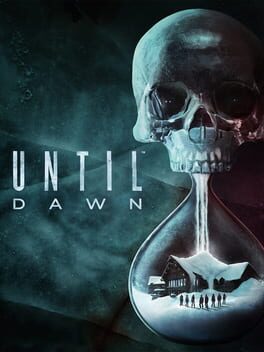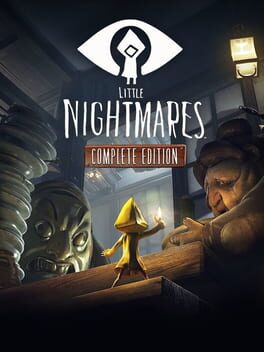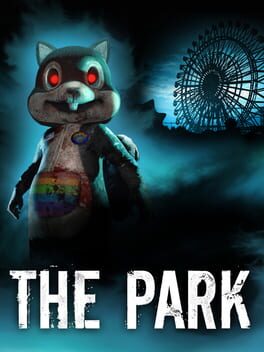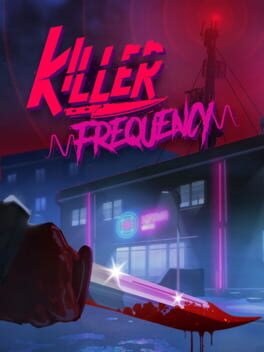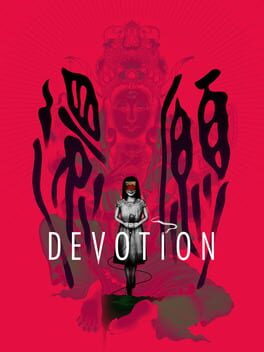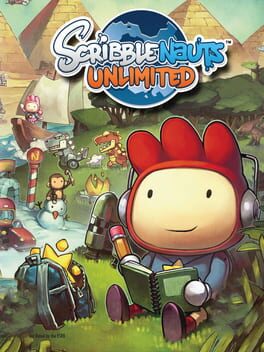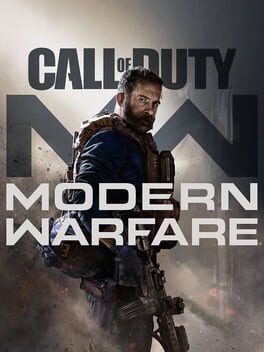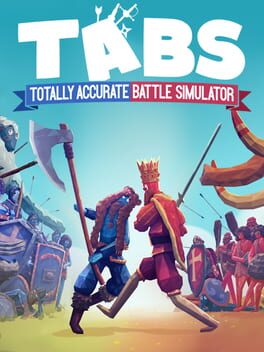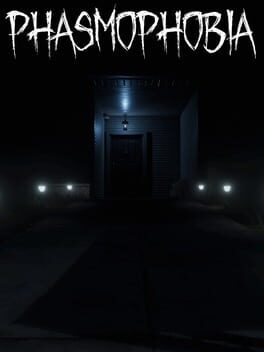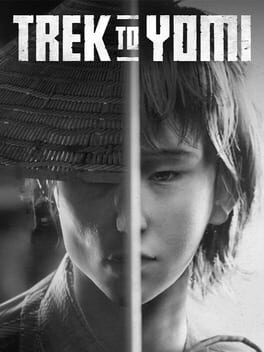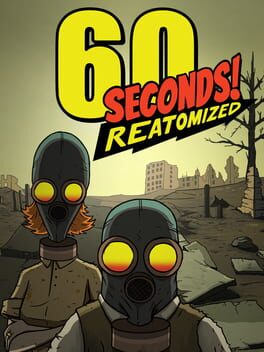Rezlo
BACKER
2015
A lot of games try to be like movies by emulating elements directly. Maybe they add a film grain, or movie-like opening credits. For Until Dawn, their emulation of the classic slashers can be seen in the characterizations, setup and flow of the game itself. A group of teens spending the night alone at a remote mountain lodge in Washington with nothing but booze and hormones is so cliche I can practically feel the acne. That’s not a complaint, just an observation. If you fancy teen slashers, you’ll enjoy Until Dawn. With these tropes comes some good and some bad. The mean-girl will be just as unlikable as she is in that 80s slasher you’d pick up from Blockbuster, the tone as indecisive as me in the candy aisle, and the dialogue just as at home on a teen’s Tumblr page. Truthfully, it makes half the cast instantly dislikable, but since they’re gonna be dying you won’t feel so bad about it at least. Until Dawn is no oscar bait, it’s best to just take it as it is and enjoy the ride.
The game uses a Butterfly Effect system to determine certain outcomes of your run, an under-the-hood system which considers every decision you make to determine who lives and who dies, as well as more innocuous things like who’s still cool with who. Certain magic totems you can find can give you an insight into possible futures, but they give little hint for how to avoid or achieve them. Both small and large decisions can be the deciding factor in someone’s survival, making it pretty much impossible to not lose a few people unless you’re using a guide. Just prepare for last-minute upsets and photo finish survivals. The game’s use of QTEs and Don’t Move Prompts that have you keep your controller still are surprisingly used to great effect here. Unless you're missing every QTE it’s rarely life or death and it’s quite exceptional at keeping you on your toes at all times. If you just so happen to have a PS4, the only console this was released on, I’d say give it a go whenever you have a free night and a hankering for horror.
The game uses a Butterfly Effect system to determine certain outcomes of your run, an under-the-hood system which considers every decision you make to determine who lives and who dies, as well as more innocuous things like who’s still cool with who. Certain magic totems you can find can give you an insight into possible futures, but they give little hint for how to avoid or achieve them. Both small and large decisions can be the deciding factor in someone’s survival, making it pretty much impossible to not lose a few people unless you’re using a guide. Just prepare for last-minute upsets and photo finish survivals. The game’s use of QTEs and Don’t Move Prompts that have you keep your controller still are surprisingly used to great effect here. Unless you're missing every QTE it’s rarely life or death and it’s quite exceptional at keeping you on your toes at all times. If you just so happen to have a PS4, the only console this was released on, I’d say give it a go whenever you have a free night and a hankering for horror.
2022
Pick Pack Pup is a grid-matching puzzle game that twists the traditional premise by having packages be sent only on a verification click by the user. The more packages on screen at once, the more points you get for shipping them. I bleed Bejeweled gems, so this was right up my wheelhouse. And the small mechanical change of cashing in matches felt novel enough to warrant its existence.
While entirely free of crank integration gameplay-wise, it offers very cute story sections presented as newspaper reels that you page-turn by using the crank. Nothing crazy, but it complimented the quirky aesthetic that they’re going for in this anthropomorphic world. The levels were broken up into time-based, move-based, and item-based requirements, and even had a lil Tetris homage. It wasn’t a hard game, so not letting player get too comfortable with level patterns kept the pace nice and brisk.
For those aching for that matching-game kick on Playdate, Pick Pack Pup also offers an infinity mode, chill mode, and danger zone. Just about every variation possible for stress-lovers and lazy-players are available for people who are particularly fond of the genre. For what it is I enjoyed my time with it. The grid perhaps could have been bigger by default, but that’s a minor nitpick of mine. Given its genre popularity it’s almost a given that something like Pick Pack Pup would be made for the Playdate, however it does provide that signature Playdate twist that sets it apart from mindless copycats, if only just slightly.
While entirely free of crank integration gameplay-wise, it offers very cute story sections presented as newspaper reels that you page-turn by using the crank. Nothing crazy, but it complimented the quirky aesthetic that they’re going for in this anthropomorphic world. The levels were broken up into time-based, move-based, and item-based requirements, and even had a lil Tetris homage. It wasn’t a hard game, so not letting player get too comfortable with level patterns kept the pace nice and brisk.
For those aching for that matching-game kick on Playdate, Pick Pack Pup also offers an infinity mode, chill mode, and danger zone. Just about every variation possible for stress-lovers and lazy-players are available for people who are particularly fond of the genre. For what it is I enjoyed my time with it. The grid perhaps could have been bigger by default, but that’s a minor nitpick of mine. Given its genre popularity it’s almost a given that something like Pick Pack Pup would be made for the Playdate, however it does provide that signature Playdate twist that sets it apart from mindless copycats, if only just slightly.
A charming puzzle-based horror whose atmosphere and soundtrack are its strongest points. The dark fantasy art direction reminds me most of Henry Selic’s works, particularly Coraline, perfectly distilling that uncanny valley of creepy-cute mixed with gothic. Coupled with the dark lullabies and booming orchestral themes it’s easy to become engrossed in the experience. It’s a bit shorter than I’d like it to be, but it mostly serves the game to keep the sections brief and succinct, plus the Secrets of the Maw DLC adds a slight increase of challenge and length that I was itching for at the end of the base game. As with most games the bosses are the best part, each providing a short but tense encounter with some of the monstrous creatures that inhabit the ship you’re on. Besides the way-points being a little too punishing in their spread sometimes, the game was a pleasant experience through and through that serves as a great killer of a free evening.
2015
Clocking it at only 2 hours at the max and requiring little player input, The Park is really more of a personal vignette than a full fledged game. Playing it a second time tempered my frustration with it, though not enough to make it worth a play still. It has an awesome setting and a juicy if perhaps overplayed mental health theme. But The Park is like an unfinished cake you took out of the oven too early. You can smell the potential, it just doesn’t have enough to really hook the player before the credits are rolling, P.T. sequence included. And speaking of cake, the game also feels like it wants to have its cake and eat it too with how it wants to be an allegory AND a supernatural story. For such a simple story they really should have tempered their ambitions to make it at all satisfying. Everyone’s too afraid to give a conclusive ending these days even when no further plans exist. Anyway, after all this talk about cake I’m fiending for it like a man lost in the desert, so I’m gonna go find a helpless confection to ravage.
2023
Killer Frequency is a super neat indie game that puts you in the shoes of a late night 80’s radio DJ in a small town that’s being plagued by murders. Seeing that you’re the only one available and qualified to take calls, you're tasked with answering 911 emergencies when the police department becomes indisposed of. As a rogue whistle-happy killer descends on the town it’s up to you and your producer Peggy to use your wits and quick thinking to solve puzzles, suss out lies, stop the killer, and ultimately lead people to safety as you simultaneously put on an equally killer radio show. The gameplay mostly consists of choosing dialogue options while at your desk, inspecting clues, and occasionally going outside your room to explore the radio station or retrieve an item.
The radio layout is delightfully comfy, and the DJ setup is fun to interact with. I do wish they leaned more into it. Implementing some more radio mechanics and giving more to do than clicking the call button and putting on records would have been ideal. Not to say it should have been a realistic simulator game, just a bit more underlying connection to the actual work of a radio DJ is all. The soundboard was a start, but entirely cosmetic and easily forgettable. What we did get I loved, but it left me wanting slightly more, indie game or not. Even without that though Killer Frequency did a good job of immersing you into the mind and world of late-night hosting. It’s less a dysfunction of the game’s offerings and more so my own desire to get greater engrossed in the world.
I’m particularly impressed by how Killer Frequency is able to instill a sense of persistent isolation, with all the lone wandering you do around the station ratcheting up the tension effectively. I especially like the pace in which it slowly reveals more and more questionable parts of the locale in an organic way, going from benign to increasingly sinister. All in the purview of a small radio station at the dead of night. Each room is a new place to investigate, even letting you find hidden records and clues early if you look hard enough. In its totality the game is neither big nor a Sherlockian challenge, but it does a great job at making you feel like it is. Barring one exception, the game is remarkably proficient at hitting above its expectation in mood and pacing. We’ll get to that exception in a minute.
The story, writing, and voice acting give light to the rest of the game, making it more of a dark comedy soup than a horror title. The actual mystery and killer themself are given a proper breadth of seriousness, but folks like Ponty of Ponty’s Pizza and jazzy Sandra are there to break it up with some much welcome comedy. That’s to say the game is legitimately superb with its comedic timing, and quite well voiced all around. Every character knows when to be silly and when to be serious. It never feels kitschy or ill-timed, playing perfectly into the 80’s over-the-top slasher aesthetic. The dialogue choices also let you play into the comedy or go for a more straightforward approach, giving you a degree of control over the tone of the story. Of course that doesn’t mean the dialogue options are superficial, you’re just not punished for making light of the situation unless you’re doing so during a time-sensitive choice.
The actual bread and butter of the game, its puzzles, are just the right amount of accessible. One could argue they hold your hand a little too much in finding clues, but you’re just as likely to find them beforehand anyway, and you could always decide to not accept hints for where something is. The puzzles themselves range from straightforward to moderately tough, a scope that works well here. Thankfully, you’ll never be asked to memorize something unreasonably long or constantly make timed choices, but I’d advise reading everything twice to make sure you’re getting the full picture. A lot of choices come with hidden caveats and clues that can be easy to miss, and in a game where every choice may be life or death it’s important to dot your i’s and cross your t’s.
This leads me into the only disappointment I had with the game. All throughout the game there’s a constant invisible threat of the killer showing up on your doorstep. With little to defend yourself with and having to venture out further and further away from your safe broadcast room, it’s all but spelled out this would lead to confrontation eventually. I thought for sure there would be at least one tense situation where you’d have to evade the killer as you sneak from hidden corner to hidden corner. There were more than a few clear moments where this could happen near the end but the time never came. The focus on dialogue and puzzle-solving is fantastic, yet I really think they missed an excellent opportunity to capitalize on the tension building with a little one-on-one traditional encounter.
Nevertheless, when push comes to shove the strengths of Killer Frequency far outweigh its weaknesses. While it won’t take longer than a day to finish it’s more than worth the pickup. I finished it in one marathon sitting around the same time of night the game takes place, no doubt helping immerse myself even more into the world. Truly all you need to have a good time is an appreciation for groovy music, snappy dialogue, and succinct puzzles.
The radio layout is delightfully comfy, and the DJ setup is fun to interact with. I do wish they leaned more into it. Implementing some more radio mechanics and giving more to do than clicking the call button and putting on records would have been ideal. Not to say it should have been a realistic simulator game, just a bit more underlying connection to the actual work of a radio DJ is all. The soundboard was a start, but entirely cosmetic and easily forgettable. What we did get I loved, but it left me wanting slightly more, indie game or not. Even without that though Killer Frequency did a good job of immersing you into the mind and world of late-night hosting. It’s less a dysfunction of the game’s offerings and more so my own desire to get greater engrossed in the world.
I’m particularly impressed by how Killer Frequency is able to instill a sense of persistent isolation, with all the lone wandering you do around the station ratcheting up the tension effectively. I especially like the pace in which it slowly reveals more and more questionable parts of the locale in an organic way, going from benign to increasingly sinister. All in the purview of a small radio station at the dead of night. Each room is a new place to investigate, even letting you find hidden records and clues early if you look hard enough. In its totality the game is neither big nor a Sherlockian challenge, but it does a great job at making you feel like it is. Barring one exception, the game is remarkably proficient at hitting above its expectation in mood and pacing. We’ll get to that exception in a minute.
The story, writing, and voice acting give light to the rest of the game, making it more of a dark comedy soup than a horror title. The actual mystery and killer themself are given a proper breadth of seriousness, but folks like Ponty of Ponty’s Pizza and jazzy Sandra are there to break it up with some much welcome comedy. That’s to say the game is legitimately superb with its comedic timing, and quite well voiced all around. Every character knows when to be silly and when to be serious. It never feels kitschy or ill-timed, playing perfectly into the 80’s over-the-top slasher aesthetic. The dialogue choices also let you play into the comedy or go for a more straightforward approach, giving you a degree of control over the tone of the story. Of course that doesn’t mean the dialogue options are superficial, you’re just not punished for making light of the situation unless you’re doing so during a time-sensitive choice.
The actual bread and butter of the game, its puzzles, are just the right amount of accessible. One could argue they hold your hand a little too much in finding clues, but you’re just as likely to find them beforehand anyway, and you could always decide to not accept hints for where something is. The puzzles themselves range from straightforward to moderately tough, a scope that works well here. Thankfully, you’ll never be asked to memorize something unreasonably long or constantly make timed choices, but I’d advise reading everything twice to make sure you’re getting the full picture. A lot of choices come with hidden caveats and clues that can be easy to miss, and in a game where every choice may be life or death it’s important to dot your i’s and cross your t’s.
This leads me into the only disappointment I had with the game. All throughout the game there’s a constant invisible threat of the killer showing up on your doorstep. With little to defend yourself with and having to venture out further and further away from your safe broadcast room, it’s all but spelled out this would lead to confrontation eventually. I thought for sure there would be at least one tense situation where you’d have to evade the killer as you sneak from hidden corner to hidden corner. There were more than a few clear moments where this could happen near the end but the time never came. The focus on dialogue and puzzle-solving is fantastic, yet I really think they missed an excellent opportunity to capitalize on the tension building with a little one-on-one traditional encounter.
Nevertheless, when push comes to shove the strengths of Killer Frequency far outweigh its weaknesses. While it won’t take longer than a day to finish it’s more than worth the pickup. I finished it in one marathon sitting around the same time of night the game takes place, no doubt helping immerse myself even more into the world. Truly all you need to have a good time is an appreciation for groovy music, snappy dialogue, and succinct puzzles.
2019
Devotion is quite a ways off from what I expected it to be. Since I like to go in blind to most games beyond their short description, especially if it’s a horror or narrative heavy game, this often means that I have little expectations beyond what it says on the tin. For Devotion that means all I knew was that it would be a 1980s Taiwan horror game, presumedly about… Devotion. And call it stereotyping but I was very much anticipating a by-the-books but by no mean unwelcome ghost game. It goes a bit deeper than that though.
Similar to Transference, this is more a game about family than the underlying creep and dread of a boogeyman stalking you. Information you learn about yourself, your daughter, and your wife is told primarily through artistic vignettes, souvenirs, and notes, told over the snapshot duration of many years. Luckily unlike Transference, I think this game did a great job in not only defying my expectations, but in making me happy that it did. It did the unthinkable, it made me care to learn more about it’s titular family. As the name suggests, the game is a tale about how desperate devotion on the part of the player character, the father, can lead a man down a dark path to save his family. It’s a sad ballad that I could dissect set piece by set piece, but for the sake of brevity and the small possibility that I can get someone else to play this game, I won’t elaborate on any more spoilers here. I’ll just add as a last note on the story front that the passage of time is portrayed fantastically in the design and wear of the apartment complex your family lives in as you explore your past, creating a wonderful narrative and aesthetic harmony.
While I said this wasn’t a traditional haunted house, don’t think that means there won’t be any scares or legitimately horrific events. In a surprise twist this game has some of the best toe-curling body horror I’ve seen, realism be damned. And before you think this is just another PT walking simulator clone with a little fluff added on, I’m glad to say there’s some super creative gameplay segments beyond walking nondescript room to nondescript room that kept me properly engaged. Some are cute, some are ethereal, and some are quite unnerving, either by nature of the story or with the help of some masterly crafted ambience. It even has a half-decent chase sequence, with the caveat that it would have been vastly improved if our player character moved faster than a light jog. Regardless, it was short and gave the player some visceral, horror-fueled urgency that the rest of the game doesn’t quite touch on.
It’s weird how in many ways I find Devotion to be similar to Layers of Fear - another walking simulator where you uncover the dark pieces of your past - and yet I enjoyed it so much more. I think the depth of story, a clear creative throughline, and genuinely well-crafted sections beyond JUST notes made it so much more intriguing throughout, even if it wasn’t what I was initially hoping for. Devotion also has this remarkable, almost claylike look to everything that weirdly takes me back to games of the PS3 era. I’m not sure why, but I love it. Inscryption is kind of similar, it has an indescribably fuzzy art style to it that makes it oddly endearing. Whatever it is, keep ‘em coming I say.
Similar to Transference, this is more a game about family than the underlying creep and dread of a boogeyman stalking you. Information you learn about yourself, your daughter, and your wife is told primarily through artistic vignettes, souvenirs, and notes, told over the snapshot duration of many years. Luckily unlike Transference, I think this game did a great job in not only defying my expectations, but in making me happy that it did. It did the unthinkable, it made me care to learn more about it’s titular family. As the name suggests, the game is a tale about how desperate devotion on the part of the player character, the father, can lead a man down a dark path to save his family. It’s a sad ballad that I could dissect set piece by set piece, but for the sake of brevity and the small possibility that I can get someone else to play this game, I won’t elaborate on any more spoilers here. I’ll just add as a last note on the story front that the passage of time is portrayed fantastically in the design and wear of the apartment complex your family lives in as you explore your past, creating a wonderful narrative and aesthetic harmony.
While I said this wasn’t a traditional haunted house, don’t think that means there won’t be any scares or legitimately horrific events. In a surprise twist this game has some of the best toe-curling body horror I’ve seen, realism be damned. And before you think this is just another PT walking simulator clone with a little fluff added on, I’m glad to say there’s some super creative gameplay segments beyond walking nondescript room to nondescript room that kept me properly engaged. Some are cute, some are ethereal, and some are quite unnerving, either by nature of the story or with the help of some masterly crafted ambience. It even has a half-decent chase sequence, with the caveat that it would have been vastly improved if our player character moved faster than a light jog. Regardless, it was short and gave the player some visceral, horror-fueled urgency that the rest of the game doesn’t quite touch on.
It’s weird how in many ways I find Devotion to be similar to Layers of Fear - another walking simulator where you uncover the dark pieces of your past - and yet I enjoyed it so much more. I think the depth of story, a clear creative throughline, and genuinely well-crafted sections beyond JUST notes made it so much more intriguing throughout, even if it wasn’t what I was initially hoping for. Devotion also has this remarkable, almost claylike look to everything that weirdly takes me back to games of the PS3 era. I’m not sure why, but I love it. Inscryption is kind of similar, it has an indescribably fuzzy art style to it that makes it oddly endearing. Whatever it is, keep ‘em coming I say.
A textbook pick-up-and-play title for couch gameplay, Scribblenauts hits that craving for relaxation just right. It has plenty of worlds and missions to keep you busy for a good while when you’re not testing the limits of your creativity.
By and far the greatest appeal of Scribblenauts is the ability to conjure up a plethora of items, people, and adjective modifiers for all things interactable. While it’s clear some corners have been cut here and there, it’s truly impressive how thorough the developers are in allowing for a good amount of freedom. It’s not the most fleshed out system, but it can be fun to tinker around with. The only thing I’ll harp on is the sometimes fickle strictness some missions have on what counts as correct. Part of the fun is finding the out-of-the-box solutions, but I suppose you can’t prepare for EVERY possibility.
By and far the greatest appeal of Scribblenauts is the ability to conjure up a plethora of items, people, and adjective modifiers for all things interactable. While it’s clear some corners have been cut here and there, it’s truly impressive how thorough the developers are in allowing for a good amount of freedom. It’s not the most fleshed out system, but it can be fun to tinker around with. The only thing I’ll harp on is the sometimes fickle strictness some missions have on what counts as correct. Part of the fun is finding the out-of-the-box solutions, but I suppose you can’t prepare for EVERY possibility.
Modern Warfare 2019 was a bit of a reentry into the COD-osphere for me. After many formative years spent with the franchise I got a bit fatigued with the lack of innovation and general oversaturation of the shooter market. The only reason I even gave this 2019 reboot a try was because for the first time in a long time, the clips I saw of the game actually made me want to play it. And after playing the game enough to unlock the mastery camo for ALL weapons, I can confidently say I do not regret that decision. If nothing else can be said, Modern Warfare is one of the nicest feeling shooters I’ve ever played. The buttery smooth movement, new features (finishers, NVGs, gunfight mode, doors), and revamped animations really breathed life into a long-retired franchise for me.
Modern Warfare’s larger emphasis on attention to detail and its semi-serious tone is a nice change of pace from the nearly endless Michael Bay-like pile of mindless action that COD has leaned into a little too hard the last few years. It’s still unmistakably Call of Duty, but almost everything it adds to the recipe builds on the franchise’s formula in new and fun ways.
The story is a decent romp, with its shining moments being the ones that are the most serious, historically reminiscence, or tactically immersive. Hopefully they can build on more moments like these in future installments. The maps are gorgeous and I can respect the desire to try something other than endless three lanes, but some maps, and especially the ground war maps, suffer from being a bit too linear and open. Not just a sincere revival of the franchise, Modern Warfare is a fantastic casual shooter that reinforces why Call of Duty is the king of dumb fun.
Modern Warfare’s larger emphasis on attention to detail and its semi-serious tone is a nice change of pace from the nearly endless Michael Bay-like pile of mindless action that COD has leaned into a little too hard the last few years. It’s still unmistakably Call of Duty, but almost everything it adds to the recipe builds on the franchise’s formula in new and fun ways.
The story is a decent romp, with its shining moments being the ones that are the most serious, historically reminiscence, or tactically immersive. Hopefully they can build on more moments like these in future installments. The maps are gorgeous and I can respect the desire to try something other than endless three lanes, but some maps, and especially the ground war maps, suffer from being a bit too linear and open. Not just a sincere revival of the franchise, Modern Warfare is a fantastic casual shooter that reinforces why Call of Duty is the king of dumb fun.
An average joe’s simulator, and I mean that in a good way. Instead of gritty reimaginings of historic battles, TABS lets the user take control of a myriad of silly, mystical, and pop-culture factions. All with the dopey googly eyes to match its laid-back cartoony nature.
TABS’ accessibility, along with its infinitely moderate entertainment value, are the main draws of the game. Its campaigns, secret troops, unit-creator, and ability to face your friends on the battlefield also gives you something to do should you get tired of building both teams yourself, or just want a challenge. Coming from someone who enjoys sandbox tinkering, TABS feels like an enjoyable middle-ground between effort and relaxation, especially with other players. Though admittedly, an extra focus on depth and variability in maps would go a long way for the game.
In case the title wasn’t warning enough, In no way is TABS meant to be taken too seriously. The jank alone is enough to hammer in that fact. Far and away the game’s biggest problem is its susceptibility to glitches. They’re never game-breaking, but prepare to have to reset a battle sometimes because a troop or two got stuck or is tripping over themselves ad infinitum. In fairness, some modicum of jank is to be expected with any battle simulator, but I feel it happens too often to be ignored. And even with it being a natural consequence of terrain and troop variability that can’t always be accounted for, it’s worth noting in contrast to an otherwise solid game.
TABS’ accessibility, along with its infinitely moderate entertainment value, are the main draws of the game. Its campaigns, secret troops, unit-creator, and ability to face your friends on the battlefield also gives you something to do should you get tired of building both teams yourself, or just want a challenge. Coming from someone who enjoys sandbox tinkering, TABS feels like an enjoyable middle-ground between effort and relaxation, especially with other players. Though admittedly, an extra focus on depth and variability in maps would go a long way for the game.
In case the title wasn’t warning enough, In no way is TABS meant to be taken too seriously. The jank alone is enough to hammer in that fact. Far and away the game’s biggest problem is its susceptibility to glitches. They’re never game-breaking, but prepare to have to reset a battle sometimes because a troop or two got stuck or is tripping over themselves ad infinitum. In fairness, some modicum of jank is to be expected with any battle simulator, but I feel it happens too often to be ignored. And even with it being a natural consequence of terrain and troop variability that can’t always be accounted for, it’s worth noting in contrast to an otherwise solid game.
2020
Phasmophobia is a game that lives and dies by the ability of players to wrangle up some friends to go ghost-hunting with. While technically playable solo you’re missing out on the real draw of the game by doing so, limiting shenanigan potential greatly as well as making harder difficulties nearly impossible. While there is enjoyment in strictly trying to figure out the ghost through investigations, the spook factor mostly wears off with time and repetition, and the inclusion of others becomes a near necessity. That isn’t even really a big deal when it comes down to it though, because if you’re playing this game it’s likely you intend to play with friends anyway.
Even with friends the game would still get old before too long, but with the dev(s?) constantly updating with new items, maps, and fixes the game can be a nice riff session for a couple hours every few weekends. Whether it be the silly, borderline-eldritch degree to which the player can stretch their body or the impromptu games of player imposed hide-and-seek, the game is as much a comedy as it is a horror game. An aspect that you come to appreciate when the aforementioned spook factor is diminished over time. At its core Phasmophobia is a decently-janky game that’s limited shelf-life is compensated with hilarious moments of tense ghost chases and player-on-player hijinks. It has no real depth to it, but it’s a fun throwaway title nevertheless.
Even with friends the game would still get old before too long, but with the dev(s?) constantly updating with new items, maps, and fixes the game can be a nice riff session for a couple hours every few weekends. Whether it be the silly, borderline-eldritch degree to which the player can stretch their body or the impromptu games of player imposed hide-and-seek, the game is as much a comedy as it is a horror game. An aspect that you come to appreciate when the aforementioned spook factor is diminished over time. At its core Phasmophobia is a decently-janky game that’s limited shelf-life is compensated with hilarious moments of tense ghost chases and player-on-player hijinks. It has no real depth to it, but it’s a fun throwaway title nevertheless.
2022
This review contains spoilers
Trek to Yomi looks great, plays ok-ish, and is mostly lukewarm. The story could be summarized in essentially two sentences. You’re a student turned warrior after your master dies, making you the new protector from enemies who would do you, your village, and your love interest harm. Lo and behold your village gets attacked, your love interest is killed, and you must decide to stay with her in death or continue to live after defeating your old enemy who destroyed your village. Even that sounds more in-depth than the game is. What the game actually entails is being under constant attack from pillagers and evil spirits as you side-scroll run across an almost 2.5D environment. It’s not bad, it’s just not something they do anything interesting with. If you’ve seen any samurai movie you know this game almost exactly.
I like the way it maintains a pseudo side-scrolling status, where you can sometimes go towards or away from the camera depending on the section. It goes back and forth from 2D movement and 3D movement so fluidly that you don’t even really notice it as you play. Some more environmental puzzles taking advantage of this would have been welcome. Regarding the aesthetics, It goes without saying you should keep the black-and-white film grain on. If you’re playing this game there’s really no reason to turn it off. For the sake of the creator's intent as well as really completing the picture of old samurai flicks. The art design of the game is undoubtedly its strongest point, and it’s quite well done. That withstanding I could have done with a lot less dawdling in Yomi, the death dimension. That dragged on far too long that even the creepy imagery couldn’t compensate.
The fighting is sadly mediocre, and probably the weakest part of the game. I’ll give credit where credits due, they have quite a few combos for so few inputs. It’s just not very engaging, especially seeing as it’s the lone source of interaction. The parry system is also really finicky, sometimes it feels generous and other times it feels demanding. As a general rule you should parry a good bit before their attack actually lands, otherwise they’ll just keep hitting past you, draining your health startlingly quick. All in all, Trek to Yomi is a fine time, but like many indie games before and since, it’s missing that secret ingredient of creative pizzazz.
I like the way it maintains a pseudo side-scrolling status, where you can sometimes go towards or away from the camera depending on the section. It goes back and forth from 2D movement and 3D movement so fluidly that you don’t even really notice it as you play. Some more environmental puzzles taking advantage of this would have been welcome. Regarding the aesthetics, It goes without saying you should keep the black-and-white film grain on. If you’re playing this game there’s really no reason to turn it off. For the sake of the creator's intent as well as really completing the picture of old samurai flicks. The art design of the game is undoubtedly its strongest point, and it’s quite well done. That withstanding I could have done with a lot less dawdling in Yomi, the death dimension. That dragged on far too long that even the creepy imagery couldn’t compensate.
The fighting is sadly mediocre, and probably the weakest part of the game. I’ll give credit where credits due, they have quite a few combos for so few inputs. It’s just not very engaging, especially seeing as it’s the lone source of interaction. The parry system is also really finicky, sometimes it feels generous and other times it feels demanding. As a general rule you should parry a good bit before their attack actually lands, otherwise they’ll just keep hitting past you, draining your health startlingly quick. All in all, Trek to Yomi is a fine time, but like many indie games before and since, it’s missing that secret ingredient of creative pizzazz.
The Infinity War of the PS2 generation, Marvel Ultimate Alliance is one of the few action RPGs that can hold my attention. Seeing as it was my first introduction to the genre and the greater Marvel Universe, it also holds a special place in my heart.
The opportunity to see so many superheroes and villains come together to fight is pure wish-fulfillment. To go along with that the story is super simple. All you need to know is that Doctor Doom is amassing a group of supervillains to take over the universe, and you must stop him with the help of various brawlers and brainiacs. It’s very much a child-friendly exposition adventure meant to showcase the many faces of Marvel, but it’s easily followable by anyone unfamiliar with the world. For existing fans, seeing the unique dialogues, locations, cinematics, side objectives, and classic outfits are rewards in and of themselves.
Good as the game is, it’s no trailblazer. You got your radial attacks, buffs, melees, and so forth. Where Ultimate Alliance really shines is seeing that synergy play out with a coordinated team or performing combined ultimates and combo abilities with nods to the comics like the fastball special. Not to say it doesn’t stand on its own merits, but it’s definitely a game enhanced by knowledge and interest in the franchise to begin with. The difficulty is par for the course with the exception of one or two bosses, but I do wish there weren't so many insta-death dangers. Thankfully, there's some cheat codes to make the game less grindy, which is nice if you don’t want to wait for abilities, characters, and outfits.
The opportunity to see so many superheroes and villains come together to fight is pure wish-fulfillment. To go along with that the story is super simple. All you need to know is that Doctor Doom is amassing a group of supervillains to take over the universe, and you must stop him with the help of various brawlers and brainiacs. It’s very much a child-friendly exposition adventure meant to showcase the many faces of Marvel, but it’s easily followable by anyone unfamiliar with the world. For existing fans, seeing the unique dialogues, locations, cinematics, side objectives, and classic outfits are rewards in and of themselves.
Good as the game is, it’s no trailblazer. You got your radial attacks, buffs, melees, and so forth. Where Ultimate Alliance really shines is seeing that synergy play out with a coordinated team or performing combined ultimates and combo abilities with nods to the comics like the fastball special. Not to say it doesn’t stand on its own merits, but it’s definitely a game enhanced by knowledge and interest in the franchise to begin with. The difficulty is par for the course with the exception of one or two bosses, but I do wish there weren't so many insta-death dangers. Thankfully, there's some cheat codes to make the game less grindy, which is nice if you don’t want to wait for abilities, characters, and outfits.
Arkham Asylum starts off strong by getting right into the action, and does so in an ideal intro to the Rocksteady Universe: by taking place in an asylum filled with a plethora of batman’s rogues gallery. In this, I feel the game particularly succeeds. It does a great job of making the world feel lived in, as well as whetting the villain appetite just enough to keep you wanting more. On top of that the whole place has this delightfully dreary mood that really hits home the theme of claustrophobic madness. Elevated by the fact that the story feels like a classic Batman story you’d see on a Saturday morning cartoon, as they even got Mark Hamill and Kevin Conroy to voice the fateful duo.
The combat is top-tier satisfaction, not unexpected coming from the Dark Knight, but don't expect any real difficulty or complexity. If you understand the basic controls the game is a cake-walk, so I’d recommend playing on the hardest difficulty even if you’re new. Additionally, most of the boss fights are sadly quite similar, with Ivy and especially Crane being the standouts in ingenuity.
Beyond the main story mode is a challenge mode, a nice distraction for whenever you want to sink a couple hours in the hectic combat mode or the more stealthy predator missions. Luckily, you have more than just your wits and fists to aid you, as both the challenge mode and the main story do well in providing a small yet versatile group of gadgets that can be used offensively and for traversal. Which is especially useful in completing the optional Riddler collect-a-thon, a side mission used to further reveal information about the batman mythos. That being said, while Arkham Asylum is a game complemented by a fondness for the caped crusader, its enjoyability extends far beyond the hardcore fans.
The combat is top-tier satisfaction, not unexpected coming from the Dark Knight, but don't expect any real difficulty or complexity. If you understand the basic controls the game is a cake-walk, so I’d recommend playing on the hardest difficulty even if you’re new. Additionally, most of the boss fights are sadly quite similar, with Ivy and especially Crane being the standouts in ingenuity.
Beyond the main story mode is a challenge mode, a nice distraction for whenever you want to sink a couple hours in the hectic combat mode or the more stealthy predator missions. Luckily, you have more than just your wits and fists to aid you, as both the challenge mode and the main story do well in providing a small yet versatile group of gadgets that can be used offensively and for traversal. Which is especially useful in completing the optional Riddler collect-a-thon, a side mission used to further reveal information about the batman mythos. That being said, while Arkham Asylum is a game complemented by a fondness for the caped crusader, its enjoyability extends far beyond the hardcore fans.
I remember playing this game a few years ago, back before the Reatomized version existed. Maybe it’s just me, but it feels a lot more difficult than it should be. And I’ll admit it, I’m awful at this game. The premise is you’re given around a minute to collect supplies and family members before a bomb drops and must hold up in a fallout shelter until help arrives. Before that you have to decide how to ration supplies, who should go out, and what messages to respond to outside the shelter. The writing is utterly hilarious, satirical, and the only reason I played this game as long as I did. Each in-game day you’re given updates on the family’s mood, hunger, and new developments that require choices. The most important choices being who to send out when and whether to let someone in. With chance playing a huge part every option to go out can be the last choice you make or the first step in getting help.
That’s where the difficulties become relevant. At lower difficulties you’re given more supplies to start and greater luck in encounters with others. Now maybe I just have the worst intuition known to man, but I always have such terrible luck in this game. Even on easy difficulty I was having trouble staying alive until the military arrived. With how many supplies there are it’s far too easy to be utterly helpless because you’re missing a single tool, or it broke when you decided to send someone out. 60 Seconds is like a series of endless unfortunate events. Every time I make a choice it goes as badly as possible, leaving my poor McDoodle family a poor broken husk when they wither away on day 60. Okay fine, it’s meant to be replayed over and over and each session is only around an hour. The problem is the game is super repetitive. Situations will repeat often, making each playthrough relatively the same. It’s like second verse, same as the first in digital form. It’s a fine game, but one I would recommend tenuously as not ideal for binging
That’s where the difficulties become relevant. At lower difficulties you’re given more supplies to start and greater luck in encounters with others. Now maybe I just have the worst intuition known to man, but I always have such terrible luck in this game. Even on easy difficulty I was having trouble staying alive until the military arrived. With how many supplies there are it’s far too easy to be utterly helpless because you’re missing a single tool, or it broke when you decided to send someone out. 60 Seconds is like a series of endless unfortunate events. Every time I make a choice it goes as badly as possible, leaving my poor McDoodle family a poor broken husk when they wither away on day 60. Okay fine, it’s meant to be replayed over and over and each session is only around an hour. The problem is the game is super repetitive. Situations will repeat often, making each playthrough relatively the same. It’s like second verse, same as the first in digital form. It’s a fine game, but one I would recommend tenuously as not ideal for binging
2011
As much as I wanted to like Homefront, I can’t help but lament its inability to overcome its shortcomings. On the whole, Homefront struggles to differentiate itself from the generic shooter template enough to make a lasting impression.
The red dawn-like setup is a neat idea that’s not been done a lot and it’s regretfully squandered here on an execution too safe and boring for its own good. I can commend the radio transmissions between missions for adding context, and the small peaks into the direness of occupied America can be moving, but it’s all undercut by a cliche cast of characters and a protagonist that may as well be a cardboard cutout. Where Homefront shines is in isolated scenes, both grand and grisly, but those moments are too sparse to keep the player engaged. Not to mention the story ends far too abruptly and with absolutely no punch.
As for the gameplay, Homefront never rises above basic competency. Most of the guns are forgettable, with the exceptions of the special guns like the launchers and snipers. The vehicle control sections are fine, even if they feel more like a met quota than a fun purposeful choice. Beyond some rudimentary grenades and rarely C4, that about does it for your arsenal. Again, while the groundwork exists for something experimental here, Homefront disappointingly insists on offering nothing new, even as a gimmick.
The red dawn-like setup is a neat idea that’s not been done a lot and it’s regretfully squandered here on an execution too safe and boring for its own good. I can commend the radio transmissions between missions for adding context, and the small peaks into the direness of occupied America can be moving, but it’s all undercut by a cliche cast of characters and a protagonist that may as well be a cardboard cutout. Where Homefront shines is in isolated scenes, both grand and grisly, but those moments are too sparse to keep the player engaged. Not to mention the story ends far too abruptly and with absolutely no punch.
As for the gameplay, Homefront never rises above basic competency. Most of the guns are forgettable, with the exceptions of the special guns like the launchers and snipers. The vehicle control sections are fine, even if they feel more like a met quota than a fun purposeful choice. Beyond some rudimentary grenades and rarely C4, that about does it for your arsenal. Again, while the groundwork exists for something experimental here, Homefront disappointingly insists on offering nothing new, even as a gimmick.
